How the real estate industry can promote urban biodiversity
Rebecca Jinks, Director of ESG and Sustainability at Taronga Ventures interviewed Alex Mclean, CEO and Co-founder of Alvéole about his views on biodiversity and nature in the built environment and how cities can be part of the solution.
-
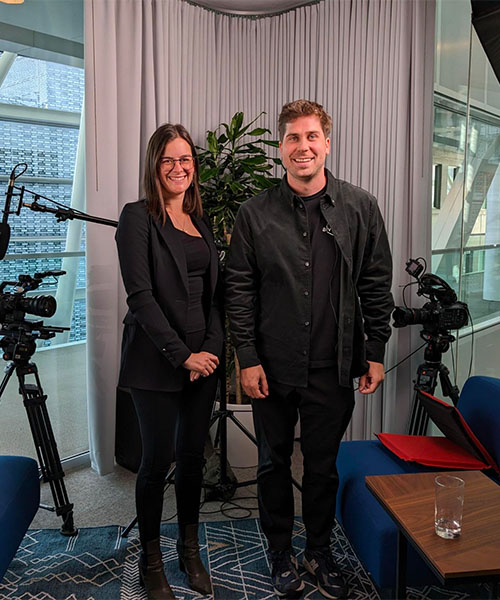
-
The discussion touches on:
- The history of Alvéole
- Opportunities for the commercial real estate industry to support urban biodiversity
- The environmental and social benefits of bringing nature into cities
- Green building certifications
- Measuring and reporting on biodiversity impact
Watch the full interview here, or read on for a recap of the key takeaways below
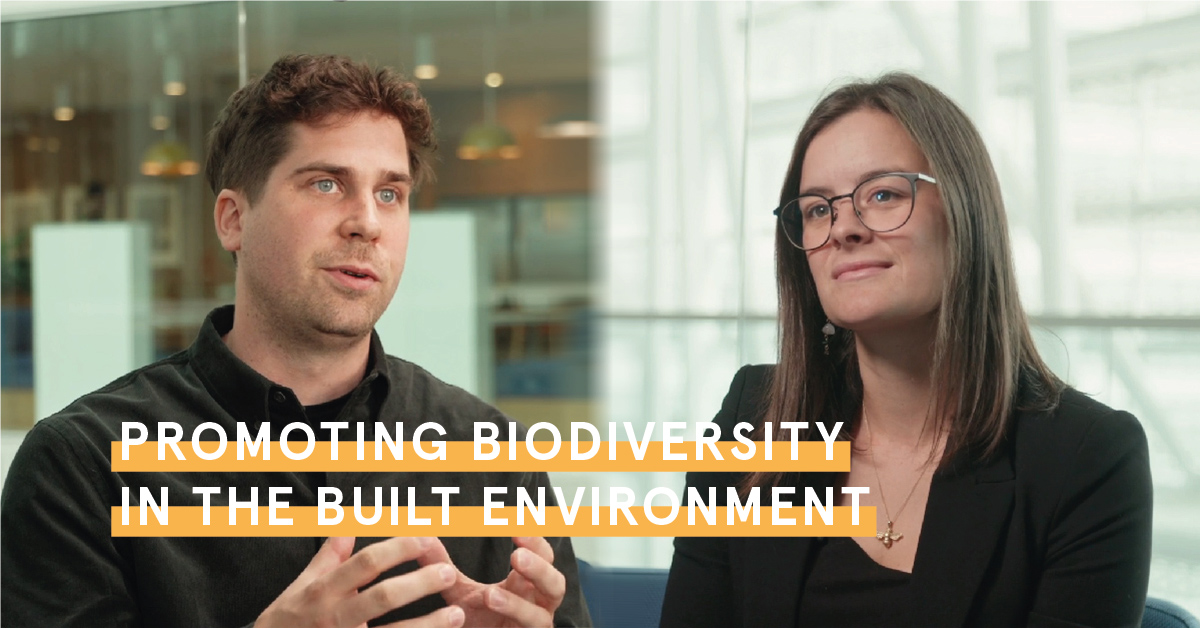
-
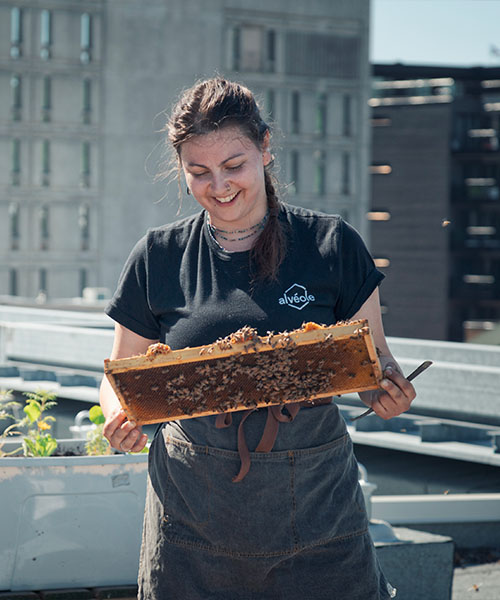
-
REBECCA JINKS: WHAT DOES ALVÉOLE DO?
Alex Mclean: We set up nature-driven solutions in buildings. Our core product is beehives and we’ve expanded to add bee hotels and small farms on rooftops as well.
It all started when I was a kid, working for my uncle who’s a rural beekeeper. 10 years ago, my two co-founders and I started Alvéole to try to bring more nature inside of cities. It’s something that we felt was missing and we had this urge to transform unused rooftops in the city.
We’ve partnered with many players in the real estate industry to use their assets to bring more nature into cities. Today we work with about 3,000 different buildings where we’ve set up beehives. We work in six different countries with over 600 of the largest real estate players in the world.
-
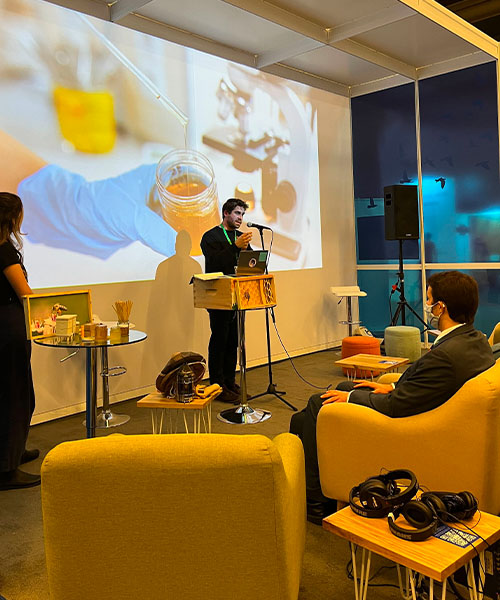
-
RJ: RECENTLY YOU PARTICIPATED IN THE COP15 BIODIVERSITY CONFERENCE IN MONTREAL. WHAT WERE SOME OF THE OUTCOMES?
AM: One of the major things that came out of this conference was understanding that in order to drive climate action, we’ll have to look at greenhouse gas emissions and biodiversity. Those two things go hand in hand. Some of the important targets that came out included thinking about biodiversity in cities and what cities can do to support biodiversity, as well as looking at how corporates report on and measure biodiversity. A lot of very important goals for 2030 are getting put into motion.
RJ: HOW DOES THE BUILT ENVIRONMENT RELATE TO BIODIVERSITY IN NATURE?
AM: We’re at a very exciting time in real estate right now. Building owners and occupiers are thinking about the impact beyond the four walls of their building. Biodiversity programs or nature-based solutions that are implemented in buildings can drive environmental impact, social impact and community impact.
RJ: HOW CAN CORPORATE REAL ESTATE PROFESSIONALS AND PARTICIPANTS THINK ABOUT BIODIVERSITY AND LEVERAGE IT FOR THE BENEFIT OF THE ENVIRONMENT AND THEIR ENVIRONMENTAL TARGETS?
AM: One of the main causes for biodiversity loss is the change of land. That includes things like large scale agriculture, but also urban development and the built environment. It’s only natural for building owners to place a strong importance on biodiversity.
The way we’ve been tackling it is by bringing more nature inside buildings. There are a ton of studies explaining the benefits of this. We work with building owners to bring nature to buildings in order to drive some ESG goals around environment, social, and community.
-
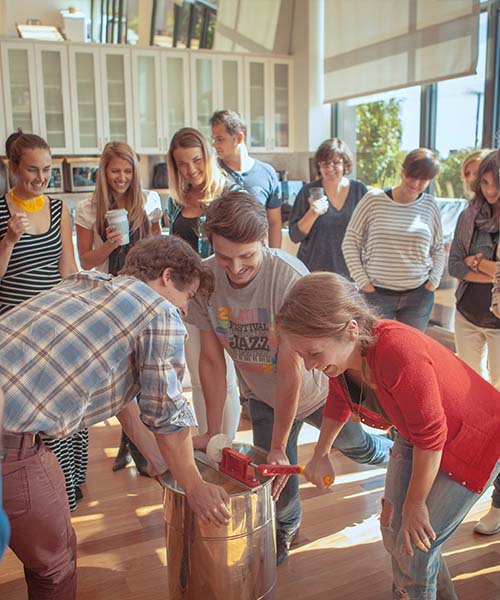
-
RJ: INCREASINGLY I’M HEARING CONVERSATIONS AROUND HOW BIODIVERSITY, AND PARTICULARLY BEES, CAN CONTRIBUTE SOCIALLY TO THE EXPERIENCE OF TENANTS. COULD YOU TALK ABOUT THAT?
AM: We set up beehives, other bee habitats, and gardens on or outside of buildings. The important piece there is that we’re bringing nature inside what is typically an area that has little nature. On the social side, there are studies that show that if you are in contact with nature in the workplace on a daily basis, your well-being can increase by as much as 15%. Studies have also shown a positive impact on creativity and productivity. Nature has this social impact that is quite important on human beings.
Building owners have tenant engagement and retention goals. You might not think of nature as something that could help reach those targets, but it does. You start having occupiers that are meeting together in workshops related to the bee program. Sometimes the honey produced on the rooftop will be sold to support a community organization. The impact of these programs is huge inside of the building but also reaches the community around the building.
-
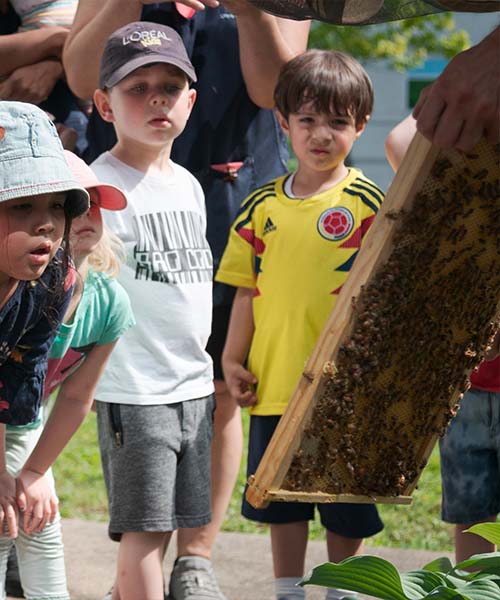
-
RJ: YOU MENTIONED HOW BEE PROGRAMS AND BIODIVERSITY INITIATIVES CAN REALLY OPEN BUILDINGS UP TO THE COMMUNITY. WHAT DO YOU MEAN BY THAT?
AM: We’re seeing building owners thinking about how they can positively impact the community around the building. Nature-based programs tend to produce something, be it honey or vegetables, that can be sold or given back to benefit the community. We’ve also seen community organizations or schools participate in workshops within buildings. That really speaks to the big objectives that we see in frameworks for ESG and green building certifications. Including the community is a really interesting aspect of these projects.
RJ: ARE YOU STARTING TO SEE A TREND WHERE GREEN BUILDING CERTIFICATIONS ARE LEANING MORE HEAVILY ON BIODIVERSITY?
AM: Yes. Nature-related programs can drive credits for certifications like LEED, or BREEAM, or Green Star, or Green Mark. We’re also seeing a growing number of frameworks coming out that include biodiversity. There’s one out of the UK called Biodiversity Net Gain, which a lot of people are trying to get ahead of. There’s going to be a lot of change over the next couple of years, where this starts to be implemented across many more certifications and frameworks.
-
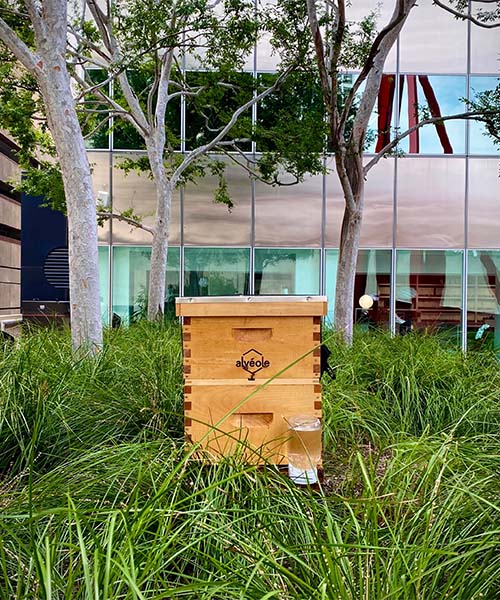
-
RJ: HOW CAN BUILDING OWNERS AND TENANTS START TO THINK ABOUT BIODIVERSITY IN TERMS OF METRICS? HOW CAN THEY REPORT ON THE IMPACT THAT’S ASSOCIATED WITH THESE PROGRAMS?
AM: We can look at the metrics and the impact in a few different ways. We can look at employee wellness and productivity and what’s happening within the community inside and outside of the building. Food production is a big one too. These programs are also creating habitat for pollinators at large. We set up honey bee hives but also wild bee hotels that can allow pollinators to nest at the building site. These are all examples of results that we can start reporting on.
RJ: HOW CAN CORPORATIONS, REAL ESTATE OWNERS, AND INVESTORS START TO THINK ABOUT MONITORING AND REPORTING ON BIODIVERSITY?
AM: A really interesting way to do this is through biomonitoring. This involves using bees at a building level to understand the forage that is missing at the city level. This way, we can give planting recommendations to building owners in terms of what they can plant specifically to support their local biodiversity. Biomonitoring and eDNA are important new technologies that will help drive this change for building owners.
WHAT IS BIOMONITORING?
Biomonitoring is a way of assessing the environment by analyzing plants or animals. Because bees fly, forage, and drink within a 3 mile (5km) radius of their hive, they act as tiny data collectors, making them an excellent indicator of the level of biodiversity in their environment. At Alvéole, we analyze the bees, pollen, and honey to learn about the local area and the health of the colony.
WHAT IS EDNA?
Environmental DNA (or eDNA) is DNA that is collected from environmental samples. In our case, we collect DNA from the honey the bees produce.
-
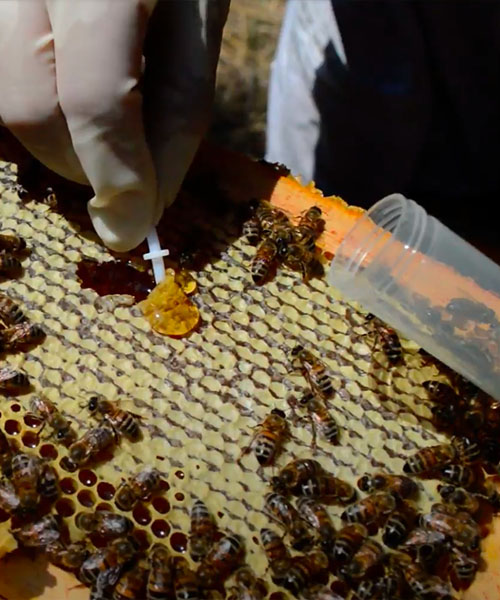
-
RJ: ALL OF A SUDDEN, YOU’VE GOT ALL THESE BUILDINGS THAT ARE COLLECTING INFORMATION ABOUT PRODUCTIVITY AND THE BIODIVERSITY OF A REGION, AND YOU’RE INTELLIGENTLY AND ACTIVELY INFLUENCING WHAT’S HAPPENING IN THOSE SPACES TO IMPROVE THE BIODIVERSITY. YOU CAN TRACK THAT IMPACT OVER TIME. THAT SOUNDS REALLY POWERFUL.
AM: The important thing is to set a baseline understanding of what is currently happening at the building level in terms of pollinators and biodiversity. Then you can start taking actions that can be measured. The same track record that we see for most initiatives can also be applied to biodiversity.
RJ: ANY FINAL THOUGHTS ON BIODIVERSITY AND NATURE IN CITIES?
AM: We need everyone to start thinking of the real impact we can have on biodiversity in cities. We tend to think about nature as something that happens outside of cities. But think about the unused rooftop space that building owners have across the city. If there’s a real change that happens on these rooftops, you can start having massive change for biodiversity in cities.
Want to hear more about the ways nature-based solutions benefit buildings and cities as a whole?
Interviewer Rebecca Jinks recently spoke on a discussion panel about ESG and tenant engagement driven by nature-based solutions.